2023 Toyota Mirai Review and Test Drive
If you love science, you might want to experiment with fuel-cell vehicle ownership.
 Christian Wardlaw
Christian Wardlaw
QuickTakes:
If this is your first time seeing a Mirai, that's likely because Toyota only sells it in California and through a single dealership in Honolulu, Hawaii. It is a fuel-cell electric vehicle (FCEV) equipped with a fuel cell that converts hydrogen into electricity to power a drive motor. The process emits nothing but water vapor into the atmosphere. Public fueling is available only in parts of California and at that Honolulu dealership.
Toyota has offered the Mirai since 2016, and the second-generation model arrived in 2021. During the redesign, the car switched from front-wheel drive to rear-wheel drive, improved from four-passenger to five-passenger seating, and adopted Lexus-level design and interior quality.
At the time, the second-generation Mirai was one of three FCEVs available. However, Honda has since discontinued the Clarity Fuel Cell, leaving the Hyundai Nexo crossover as the only alternative to the Mirai.
In 2022, Toyota introduced its Teammate Advanced Drive hands-free driving-assistance technology on the Mirai, and this year, the 2023 Mirai gets a new Toyota Audio Multimedia infotainment system. Unfortunately, my test car did not have Teammate Advanced Drive, which costs nearly $5,200 and is available only on the top trim level.
 Christian Wardlaw
Christian Wardlaw
The 2023 Toyota Mirai comes in XLE and Limited trim, and base prices range from the low $50,000s to the high $60,000s, including the destination charge to ship the car from the Aichi, Japan factory that builds it to the dealership. Yes, the Mirai is expensive. However, thanks to its design, materials quality, and technology, it could easily wear a Lexus nameplate.
Three factors add even more value to the car. Whether you buy or lease a 2023 Mirai, Toyota provides $15,000 in complimentary fuel for the car and extends its ToyotaCare free maintenance program to three years or 35,000 miles. In addition, the Mirai qualifies for carpool lane access in California.
For this 2023 Mirai review, I test-drove the Limited in Southern California. It came with extra-cost Supersonic Red paint, 20-inch Super Chrome wheels, a carpeted trunk mat, and other upgrades. The manufacturer's suggested retail price was $68,894, including the $1,095 destination charge. Toyota provided the vehicle for this Mirai review.
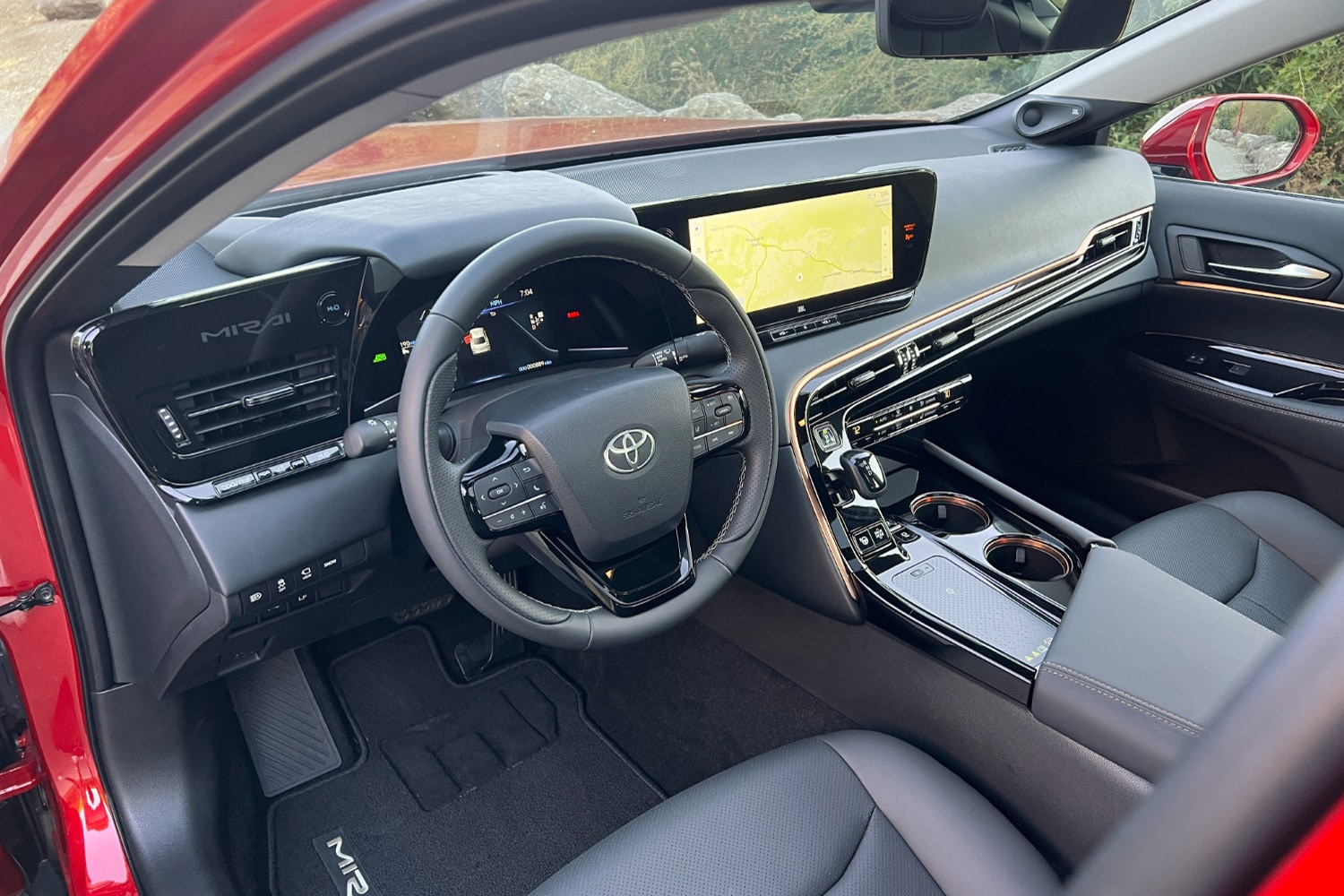 Christian Wardlaw
Christian Wardlaw
A Luxury Car in Nearly Every Way
Thanks to its rear-drive platform, the Mirai boasts an alluring long hood and short deck appearance with a fast roofline. In addition, the optional 20-inch Super Chrome wheels on the test car help make a convincing case that, in Limited trim, the Mirai is a luxury car wearing a mainstream emblem.
Open the driver's door, and the upscale look and feel continues inside, where dramatic design and quality materials mingle with a smattering of Toyota parts-bin switchgear. Metallic black plastic trim sparkles like it has dust on it, collects fingerprints like a magnet, and throws significant glare into the driver's face on a sunny day. Trendy copper-colored accent pieces complete the look.
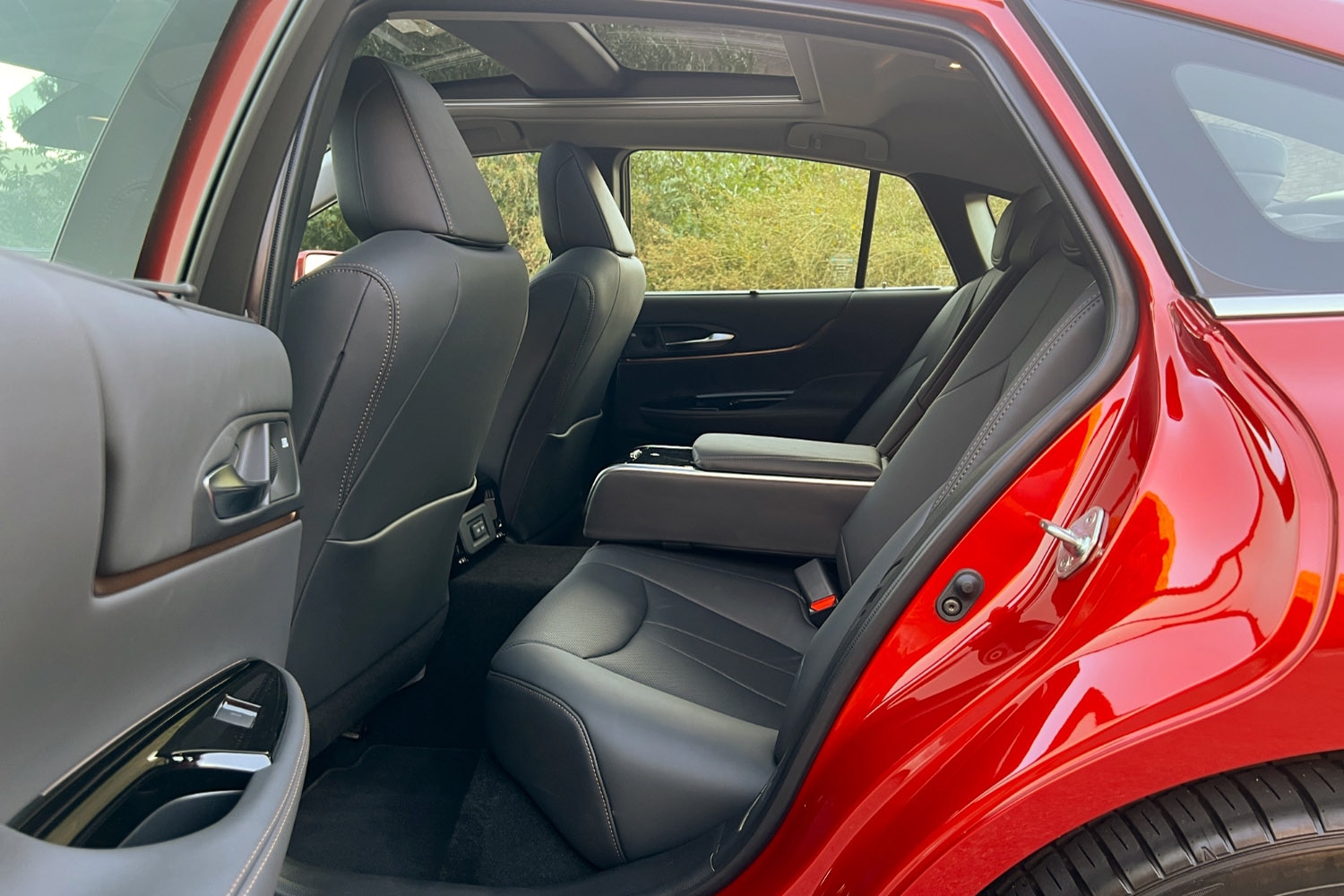 Christian Wardlaw
Christian Wardlaw
Unconventional transmission controls include a Park button and a joystick gear selector, similar to a Toyota Prius. The center console is also home to a large wireless smartphone charger and accommodating cupholders, and there is a generously sized storage area under the padded armrest. Toyota provides volume buttons beneath the infotainment screen, but you must tune the radio using steering wheel controls or voice commands.
Oddly, the automaker tucks the climate controls under the center air vents, closer to the passenger than the driver, but this decision preserves the Mirai's compelling cabin design.
With the driver's seat set to my preference, I had to duck to enter and exit the car due to the low roofline. However, the Mirai Limited's heated and ventilated front seats proved supportive, and the soft, smooth SofTex artificial leather is convincingly plush and upscale. In addition, Toyota pads all interior surfaces you may contact, adding to the car's comfort.
Technically, the Mirai can seat five people, but four will likely be happier. Though it is a long car, I didn't find its rear seat roomy. In addition, the intrusive rear wheel wells impede easy entry and exit.
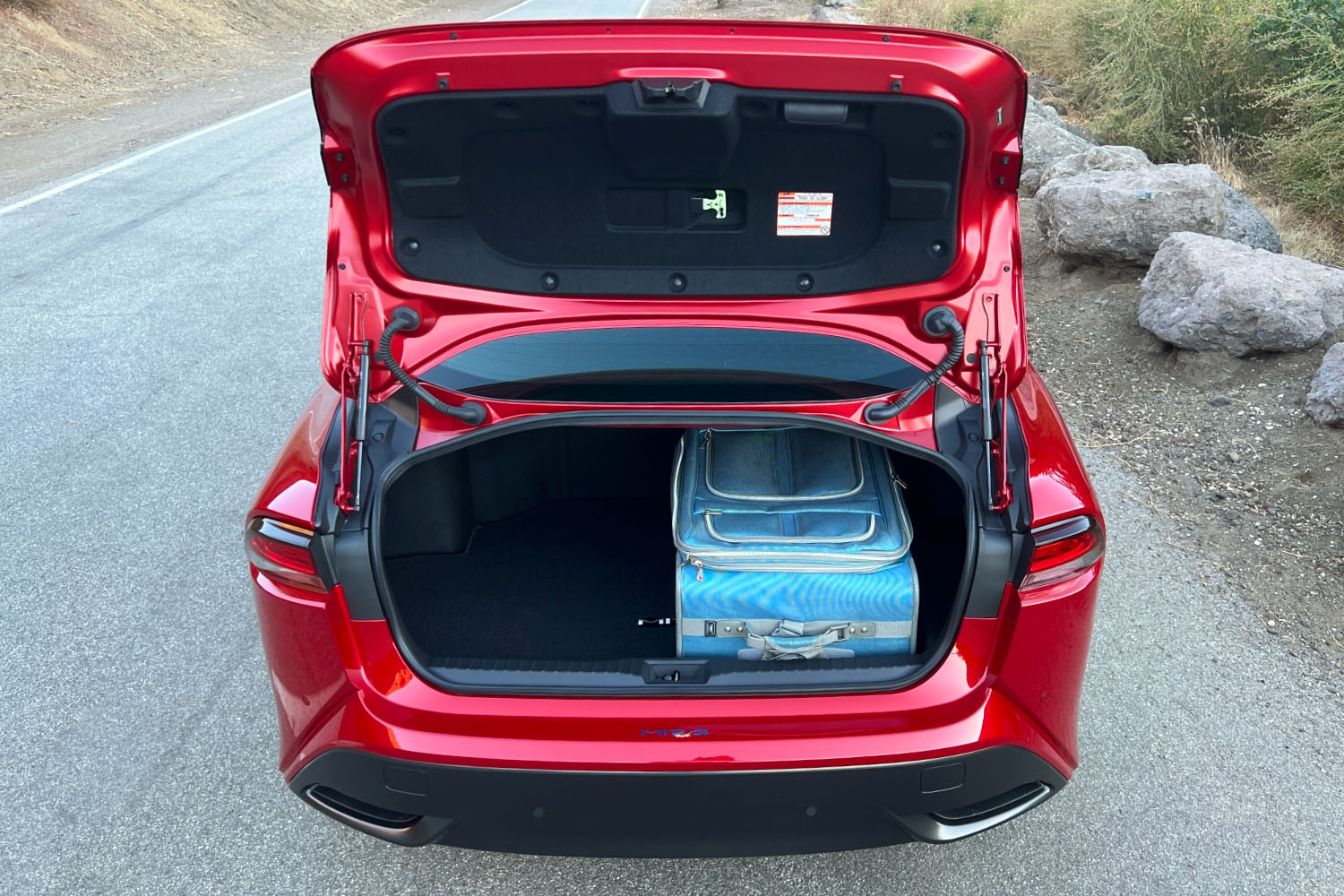 Christian Wardlaw
Christian Wardlaw
Once seated, rear passengers sit inboard at a slightly offset angle, so one knee may contact the softly padded front seatback while the other doesn't. Foot space and headroom are also snug. The test car had a rear center armrest providing cupholders, a large storage area, and a touch-sensing control panel for the rear climate system, heated and ventilated rear seats, music selections, and a power rear window sunshade. My teenagers liked having control over what played over the car's JBL speakers.
Plan to travel light. In addition to a tight back seat, the Mirai has just 9.6 cubic-feet of space in the trunk, and the rear seats don't fold down because of the fuel-cell powertrain.
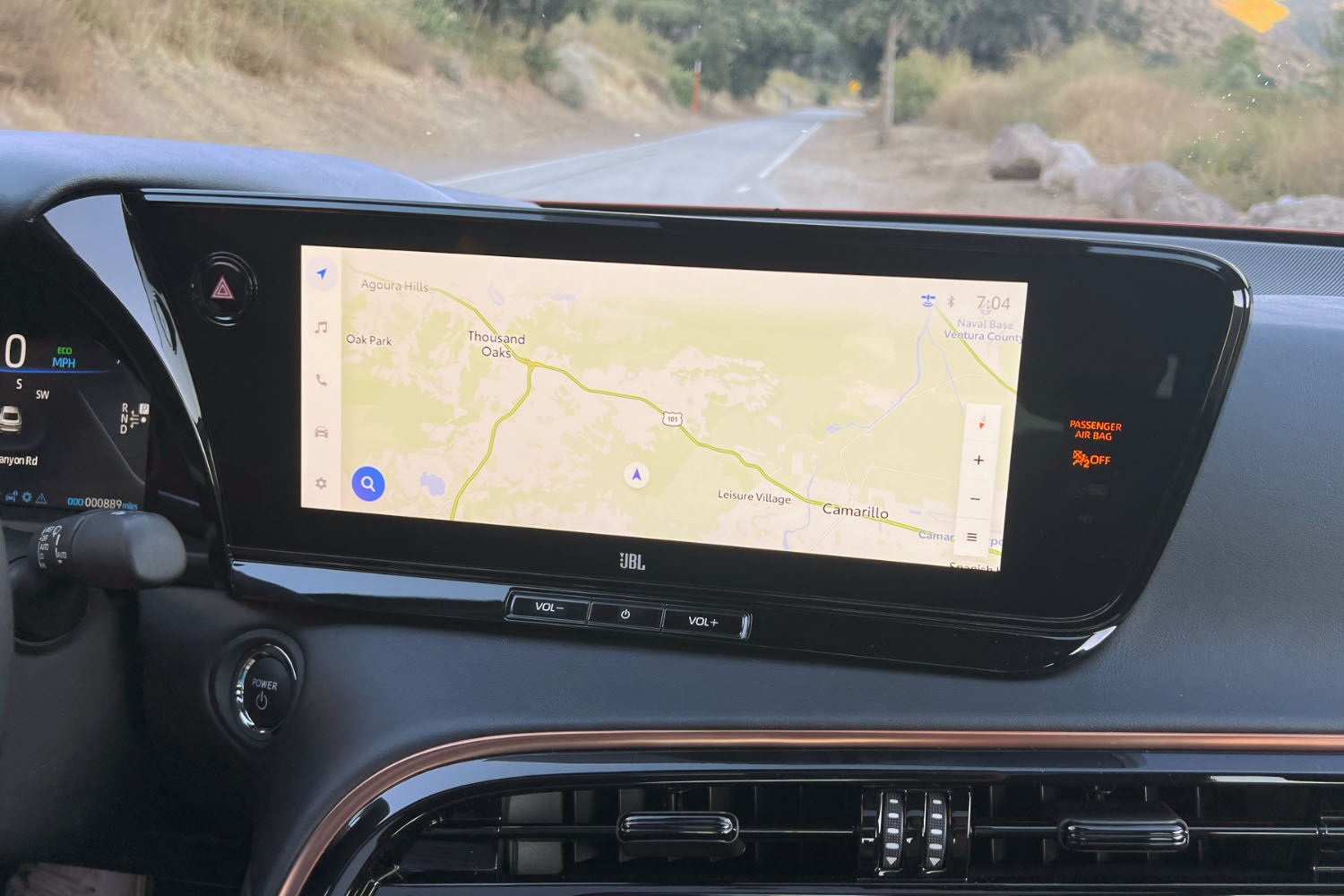 Christian Wardlaw
Christian Wardlaw
Futuristic Powertrain, Last-Generation Technology
Toyota equips the Mirai with an 8.0-inch digital instrumentation panel. I feel this is too small and forces the automaker to cram information onto a limited amount of real estate, making it harder to find and reference data. Get the Teammate Advanced Drive option package, and the car has a 12.3-inch display.
Fortunately, the new Toyota Audio Multimedia (TAM) includes a 12.3-inch touchscreen as standard equipment. It features wireless Apple CarPlay and Android Auto connectivity, SiriusXM satellite radio, and trial subscriptions to five connected service plans. They include access to a Wi-Fi hot spot, remote connectivity to the car through a smartphone app, a cloud-based navigation system with natural speech voice recognition and a digital assistant as well as emergency assistance and automatic collision notification.
Unfortunately, the TAM does not have a traditional home screen showing data from multiple main menus. When the navigation system is on the screen, that's all you'll see. When the music is on the screen, you won't be able to quickly reference the navigation map to know where you are and what's coming up on your route. The TAM also does away with traditional volume and tuning knobs, though in the Mirai, Toyota does provide volume buttons.
 Christian Wardlaw
Christian Wardlaw
My test car had an active subscription to Drive Connect, which equips the Mirai with navigation, a digital assistant called Intelligent Assistant, Google points-of-interest data, and a destination-assist function. You rouse the digital assistant by saying, "Hey, Toyota," followed by something like, "Give me directions to the nearest hospital."
Unfortunately, this technology did not work in the Mirai as well as in other Toyota and Lexus models. For example, despite how quiet this car is on the road, it often could not understand what I was saying. In addition, it doesn't parse its database only for hospitals when you're seeking that kind of care. When I asked for directions to a hydrogen station, it initially wanted to direct me to a compressed natural gas station.
In addition, the TAM offers access to an energy flow display and an air purification display. Fuel-cell vehicles take air into the fuel cell, where oxygen and hydrogen create a chemical reaction, producing electricity and water vapor. The water vapor is the exhaust, and what comes out of the Mirai into the atmosphere is cleaner than what went in through the grille.
The test car also had a head-up display, a camera-based digital rearview mirror, a surround-view camera system, and a semi-autonomous parking-assistance system called Advanced Park.
![]() Christian Wardlaw
Christian Wardlaw
Curiously, Toyota does not equip the Mirai with the latest Toyota Safety Sense 3.0 (TSS 3.0) collection of safety features. Instead, it uses TSS 2.5, lacking Road Sign Assist and Proactive Driving Assist. Neither is necessary, however, Toyota needs to improve how TSS 2.5 works in the Mirai.
Driving north on Pacific Coast Highway between Malibu and Oxnard, the Mirai's standard adaptive cruise control, lane-departure warning, lane-keeping assist, and lane-centering assist struggled to navigate bends in the road and situations where a single lane widened into two or where two lanes narrowed into one.
This same behavior was a problem on the southbound Route 101 climbing the winding Conejo Grade. Also, at the base of the mountains, the adaptive cruise control allowed the Mirai to drop 6 mph from the set speed before accelerating up the hill. In addition, on the mostly straight stretch of freeway passing Naval Base Ventura County, TSS 2.5 had trouble ignoring exit and entrance ramps.
Ultimately, TSS 2.5 is distracting in the Mirai, continuously drawing the driver's attention to regular audible and visual alerts and requiring the driver to override undesirable inputs. I found driving the car more rewarding without using the adaptive cruise control, lane-keeping, and lane-centering systems.
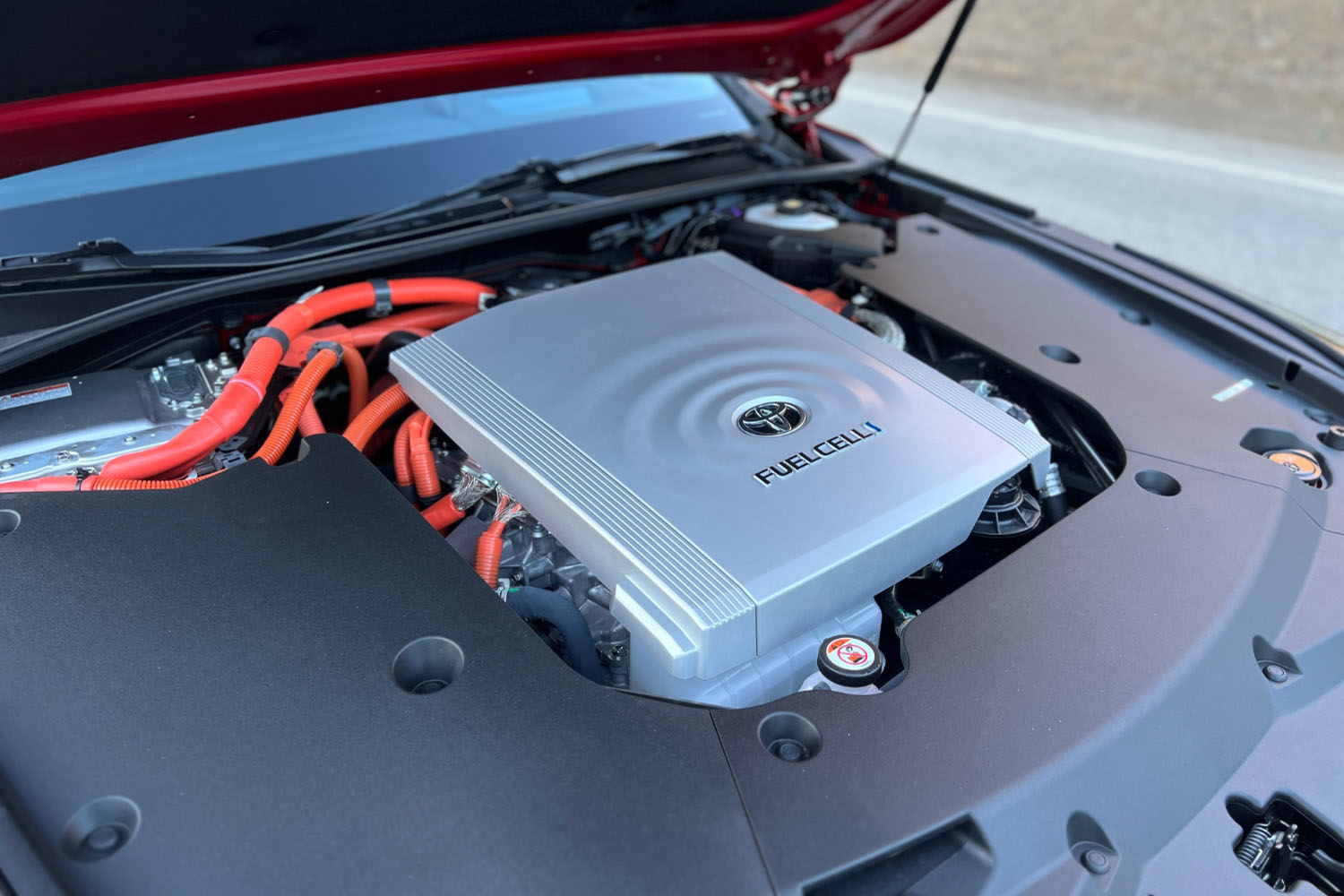 Christian Wardlaw
Christian Wardlaw
The Mirai is Silent, Smooth, and Slow
Fuel cells convert hydrogen gas into electricity to power a vehicle. You don't plug them in to charge a battery. Instead, you pull up to a hydrogen pump to refill the tank. They work similarly to traditional gasoline pumps in that you swipe a credit card and fill your tank, which takes about five minutes if everything works properly. But with a hydrogen pump, you must securely latch the nozzle to the car. Also, the pump handle gets very cold as it operates, so wearing gloves during refueling is a good idea.
In the Mirai, the electricity flows through a 1.24-kWh lithium-ion battery to an electric motor making 182 horsepower and 300 pound-feet of torque. When accelerating, the Mirai launches quickly thanks to the torque. But as the car gathers speed, the power tapers off, resulting in a Toyota-estimated zero-to-60-mph acceleration time of 9.2 seconds.
Toyota also estimates 402 miles of range for the Mirai XLE and 357 miles for the Mirai Limited, which is heavier and has larger wheels and tires.
 Christian Wardlaw
Christian Wardlaw
Toyota delivered the Mirai to me with a partial tank of hydrogen because the station serving my area of Los Angeles was out of fuel, underscoring the primary challenge of relying on an FCEV as a daily driver. As of publication, only 54 stations exist in California, and they're reportedly serving more than 17,000 FCEVs, so encountering a lack of fuel is likely to happen.
You can choose between Eco, Normal, and Sport driving modes. I selected Normal and started my evaluation drive with 171 miles of remaining range. It was a warm day, requiring the use of air conditioning, and my mountainous route included elevation changes ranging from sea level to about 1,400 feet.
After 71.9 miles of driving, the Mirai showed 101 miles of remaining range and told me I'd averaged 43 MPGe, a significant shortfall from Toyota's estimate of 67/64/65 MPGe city/highway/combined. The Mirai also chastised me for an Eco Score of 44 out of 100 points, but in my defense, I did perform a couple of hard acceleration runs.
Everything related to driving the Mirai is silky, smooth, and soft. It is super quiet inside, and the powertrain emits faint whirs, whooshes, and whistles. When climbing a mountain grade, there's even a subtle high-pitched sound like a table saw spinning at full speed in a garage down the street.
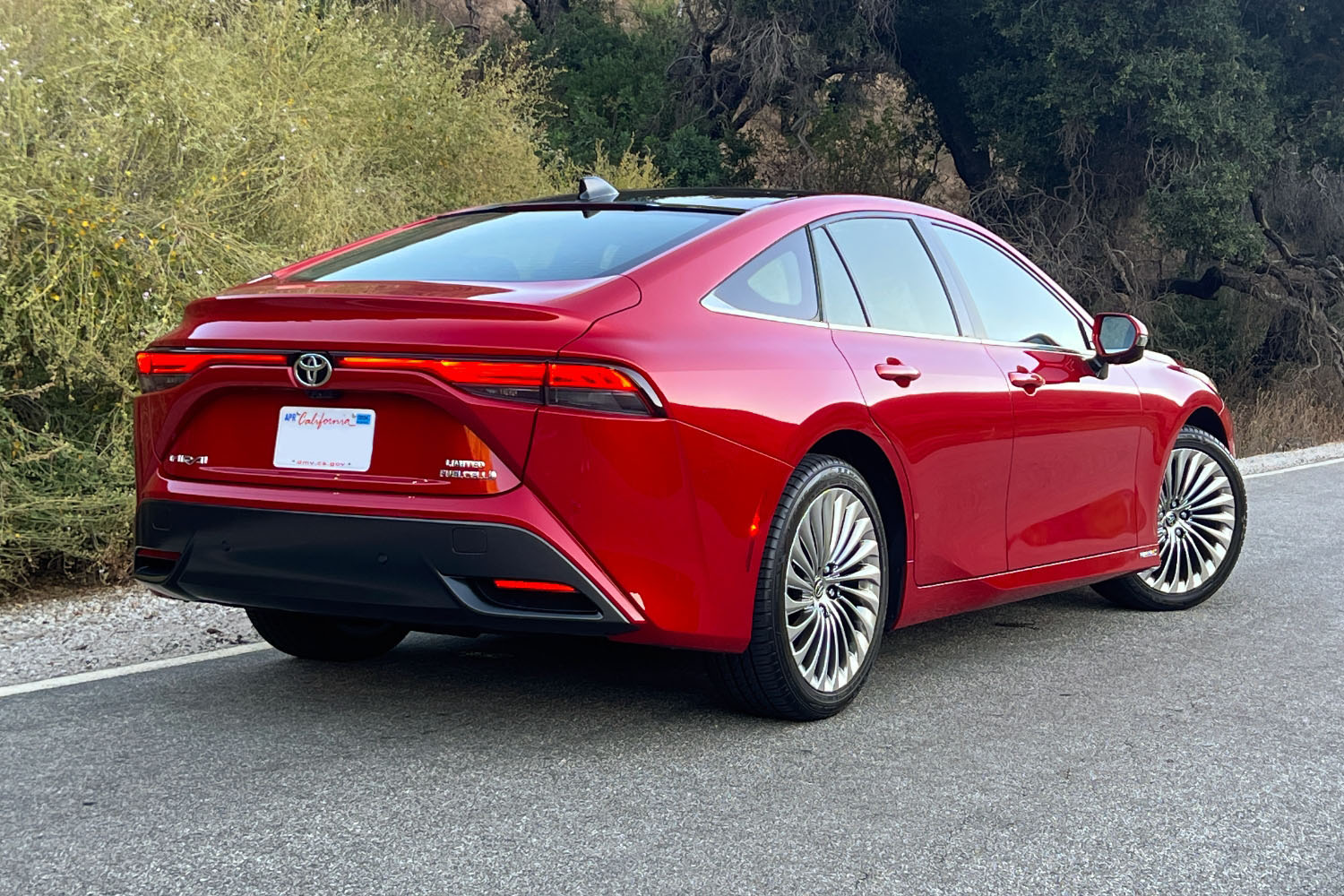 Christian Wardlaw
Christian Wardlaw
The Mirai rapidly accelerates from a stop, but as the generous torque fades and the meager horsepower replaces it, the car starts feeling slow and sluggish just as you get up to highway speeds. The suspension soaks up bumps and breaks in the pavement like you're driving a cloud instead of a car. This Toyota is plush, a comfy cruiser instead of a sports sedan, with a ride like old-school Detroit iron.
Nevertheless, and perhaps against my better judgment, I attempted to hustle the Mirai down Mulholland Highway in the Santa Monica Mountains. Like any rear-drive car, when you accelerate out of a corner, the Mirai pivots and points its nose toward the next straight section of the road. But that's where the fun ends. Roll, dive, and squat are constant companions on a winding road with sharp curves, and the Mirai's regenerative brakes are hard to modulate in this environment.
In addition, I found the Mirai's behavior difficult to predict due to the absence of traditional aural cues. There isn't any wind noise to indicate rising velocity, there isn't any tire squeal to suggest approaching limits of grip, and there aren't any transmission shifts or engine revs to communicate powertrain behavior. These are challenges with any electric vehicle, but the Mirai's soft suspension tuning and syrupy steering magnify them.
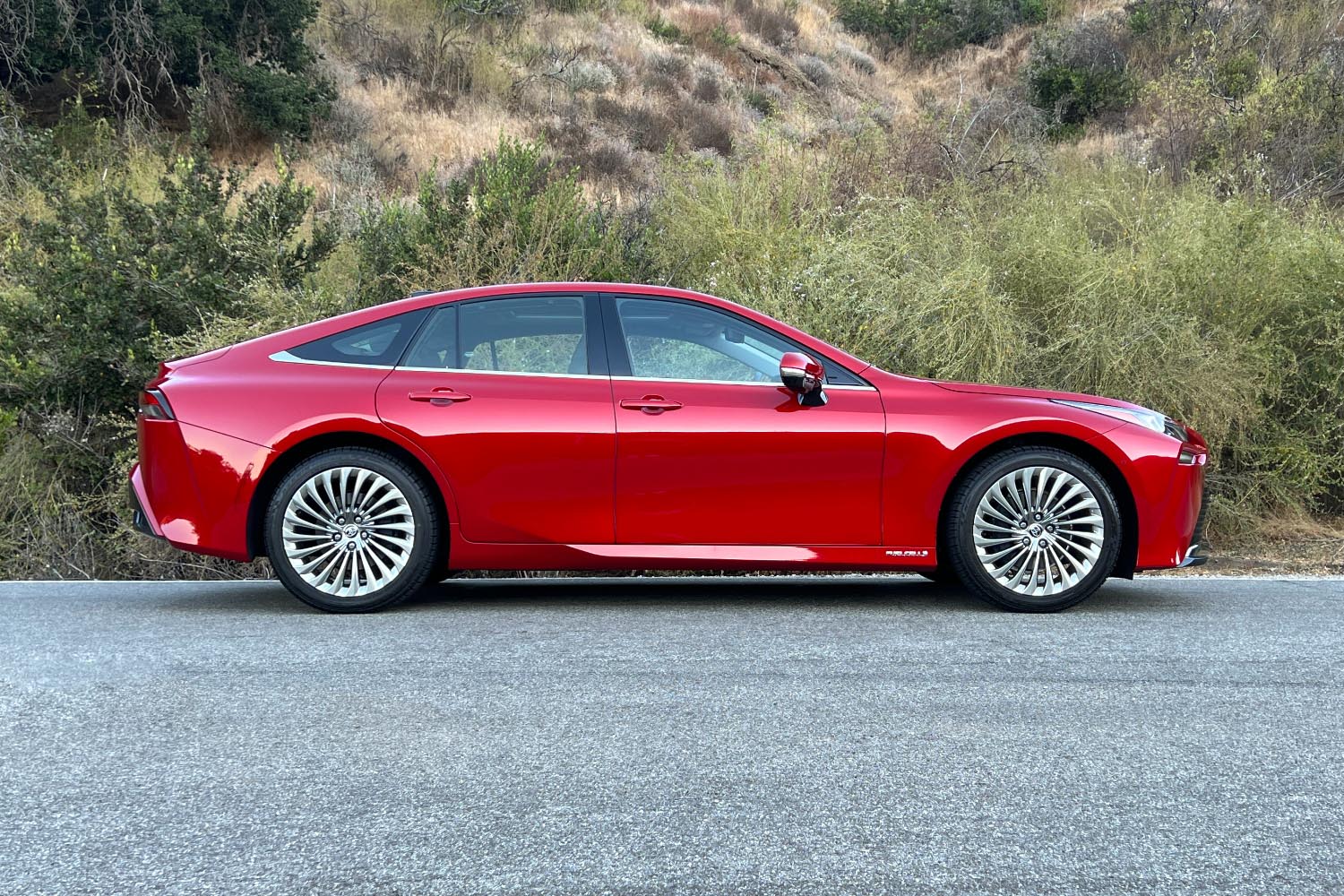 Christian Wardlaw
Christian Wardlaw
Is the 2023 Toyota Mirai a Good Car?
I'm a fan of fuel-cell electric vehicles and have been since I first drove one nearly two decades ago. They're fascinating, futuristic, and full of promise.
Without widespread green hydrogen production, the necessary refueling infrastructure, and more compact onboard storage solutions, however, FCEVs won't keep pace with battery-electric vehicles (BEVs). Solid-state battery technology, longer driving ranges, rapidly expanding infrastructure, and faster recharging times make BEVs increasingly appealing and viable alternatives to the internal-combustion engine.
Advancements with BEVs could render FCEVs like the Toyota Mirai irrelevant, so if your heart is set on driving a science project of a car powered by an electrochemical reaction, consider leasing instead of buying. That way, if FCEVs go out of production and the infrastructure crumbles, the Mirai is Toyota's problem and not yours.



